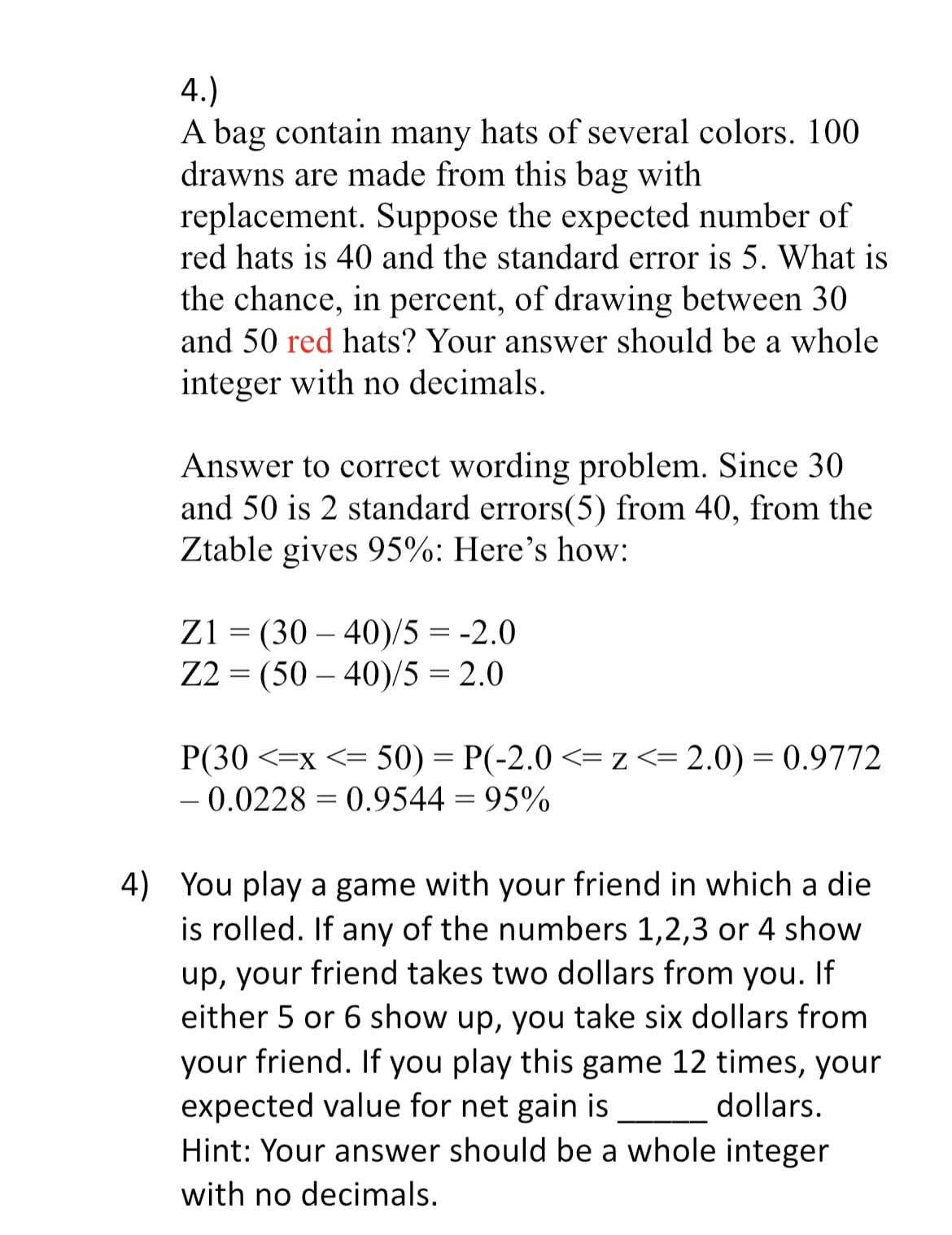4.) A bag contain many hats of several colors. 100 drawns are made from this bag with replacement. Suppose the expected number of red hats is 40 and the standard error is 5. What is the chance, in percent, of drawing between 30 and 50 red hats? Your answer should be a whole with no dr imala into
4.) A bag contain many hats of several colors. 100 drawns are made from this bag with replacement. Suppose the expected number of red hats is 40 and the standard error is 5. What is the chance, in percent, of drawing between 30 and 50 red hats? Your answer should be a whole with no dr imala into
Holt Mcdougal Larson Pre-algebra: Student Edition 2012
1st Edition
ISBN:9780547587776
Author:HOLT MCDOUGAL
Publisher:HOLT MCDOUGAL
Chapter11: Data Analysis And Probability
Section: Chapter Questions
Problem 8CR
Related questions
Question

Transcribed Image Text:4.)
A bag contain many hats of several colors. 100
drawns are made from this bag with
replacement. Suppose the expected number of
red hats is 40 and the standard error is 5. What is
the chance, in percent, of drawing between 30
and 50 red hats? Your answer should be a whole
integer with no decimals.
Answer to correct wording problem. Since 30
and 50 is 2 standard errors(5) from 40, from the
Ztable gives 95%: Here's how:
Z1 = (30-40)/5 = -2.0
Z2 (50-40)/5 = 2.0
=
P(30 < x <= 50) = P(-2.0 <= z <= 2.0) = 0.9772
-0.0228 = 0.9544 = 95%
4) You play a game with your friend in which a die
is rolled. If any of the numbers 1,2,3 or 4 show
up, your friend takes two dollars from you. If
either 5 or 6 show up, you take six dollars from
your friend. If you play this game 12 times, your
expected value for net gain is
dollars.
Hint: Your answer should be a whole integer
with no decimals.
Expert Solution
This question has been solved!
Explore an expertly crafted, step-by-step solution for a thorough understanding of key concepts.
This is a popular solution!
Trending now
This is a popular solution!
Step by step
Solved in 2 steps

Recommended textbooks for you

Holt Mcdougal Larson Pre-algebra: Student Edition…
Algebra
ISBN:
9780547587776
Author:
HOLT MCDOUGAL
Publisher:
HOLT MCDOUGAL

College Algebra
Algebra
ISBN:
9781305115545
Author:
James Stewart, Lothar Redlin, Saleem Watson
Publisher:
Cengage Learning


Holt Mcdougal Larson Pre-algebra: Student Edition…
Algebra
ISBN:
9780547587776
Author:
HOLT MCDOUGAL
Publisher:
HOLT MCDOUGAL

College Algebra
Algebra
ISBN:
9781305115545
Author:
James Stewart, Lothar Redlin, Saleem Watson
Publisher:
Cengage Learning


Algebra & Trigonometry with Analytic Geometry
Algebra
ISBN:
9781133382119
Author:
Swokowski
Publisher:
Cengage